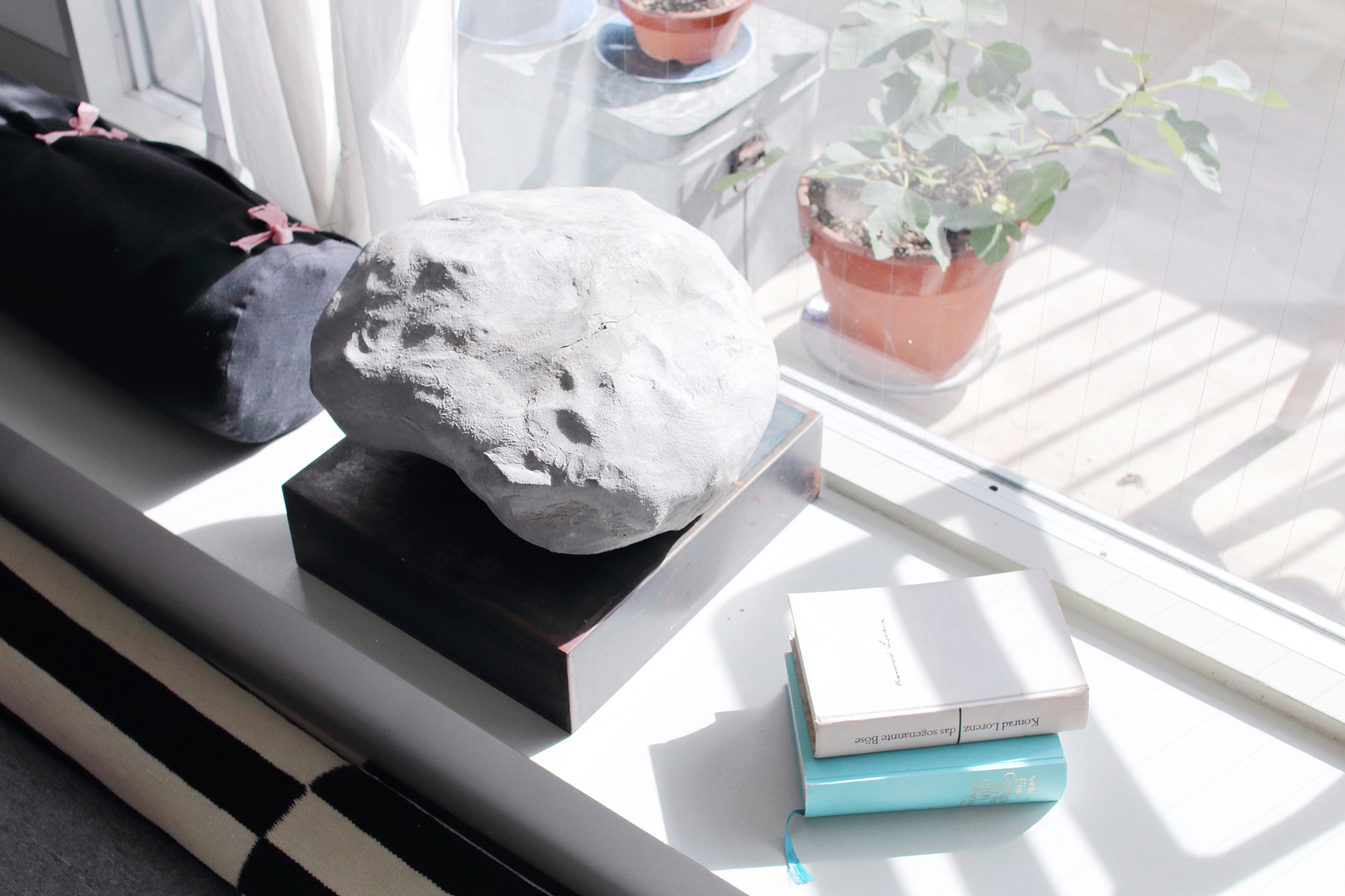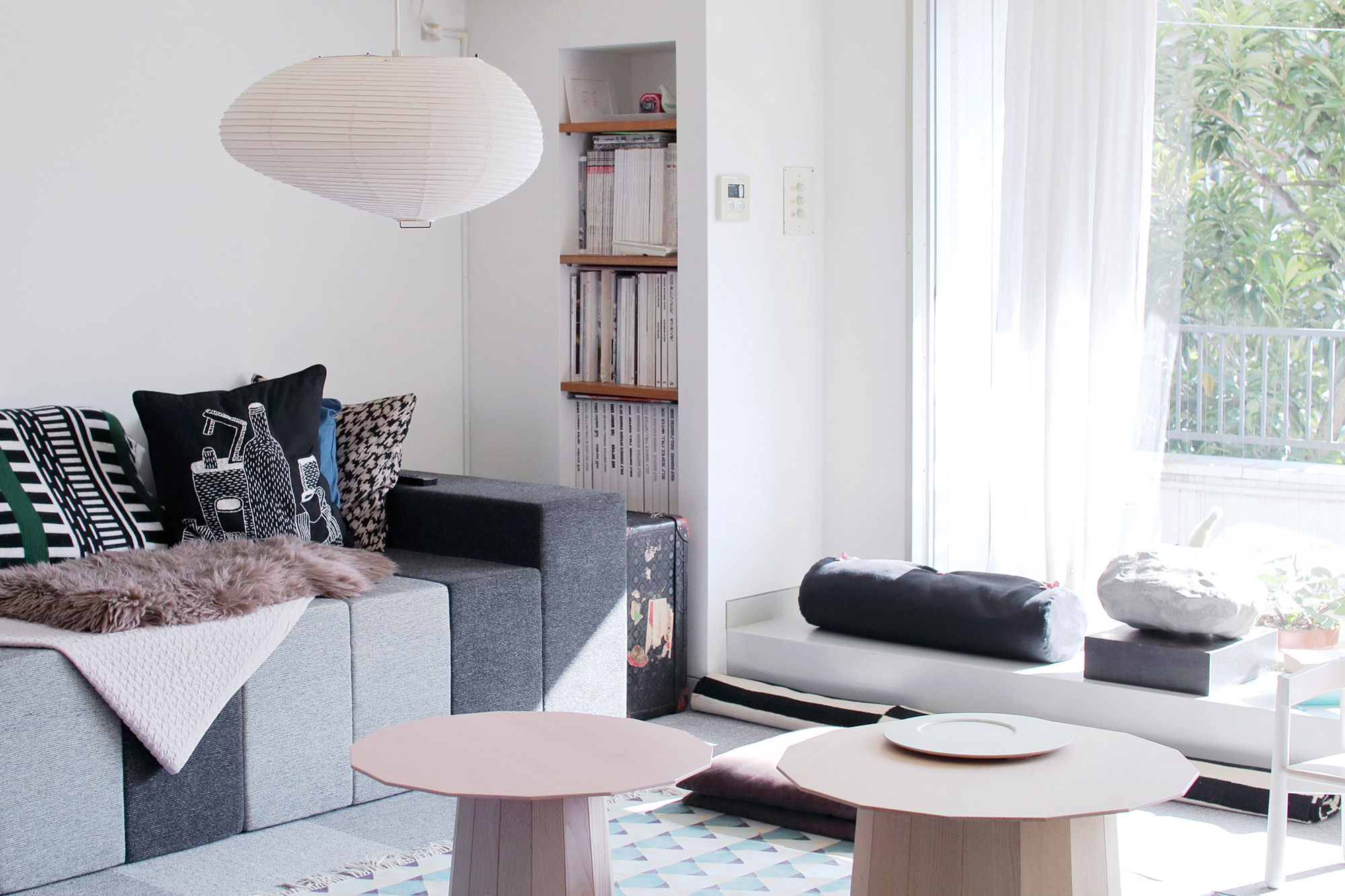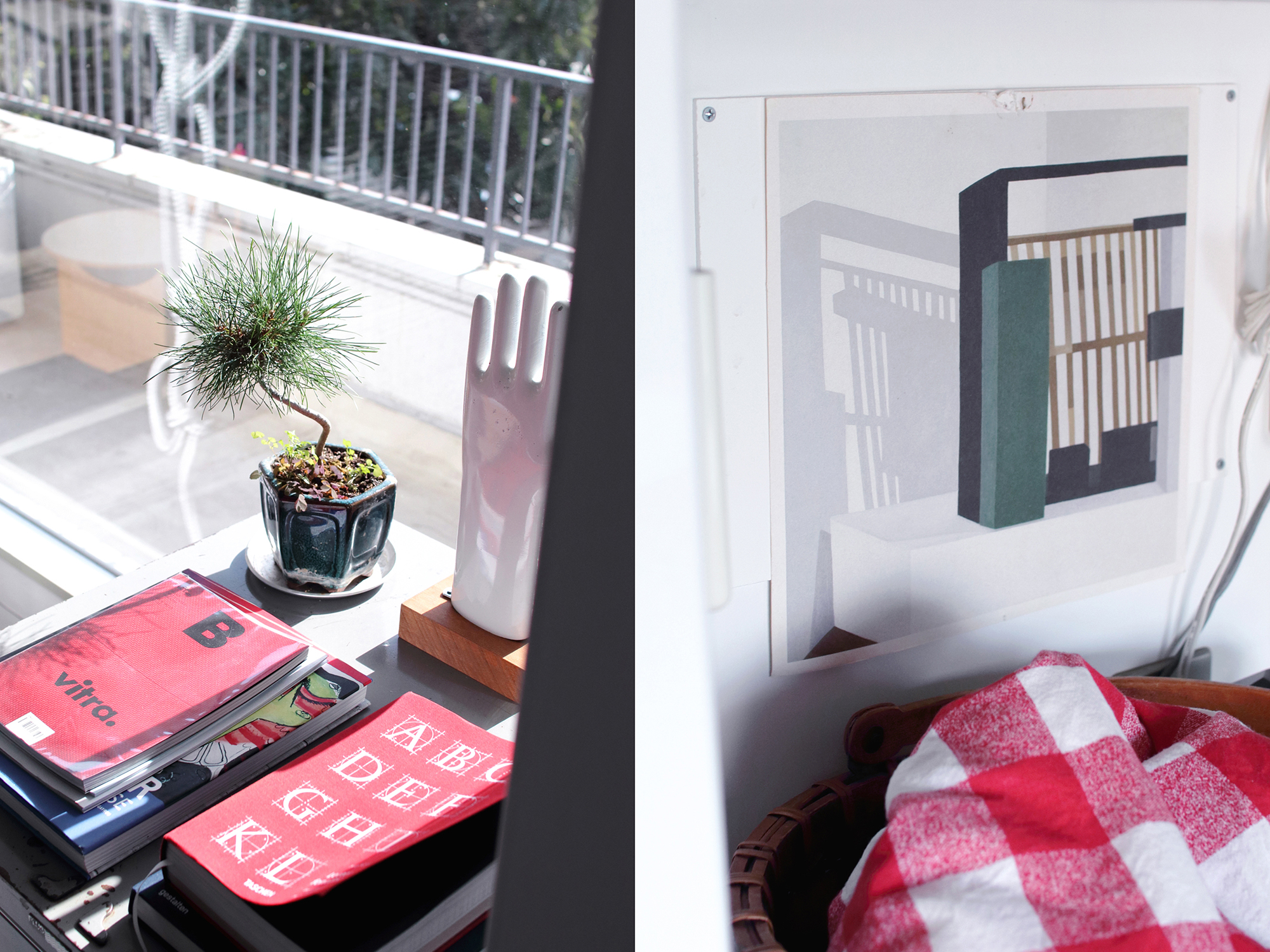Tokyo Life: David Glaettli

It’s time for the second instalment of ‘Tokyo Life’ – the special Living Not Decorating series brought to us by R-ESTATE TOKYO. This week, Ben Davis speaks with David Glaettli – creative director of Japanese furniture brand Karimoku New Standard – about nomadic living, the influence of Kyoto on his practice, and life in his Toritsu-Daigaku home.
David Glaettli is a designer whose work is woven into his daily life. As an independent design director and the creative director of Japanese furniture brand Karimoku New Standard, David spent almost a decade in Kyoto before relocating to Tokyo, where he now calls an ‘80s apartment in Toritsu-Daigaku home.
Intent on learning more about David’s approach to design, I spent a morning at his apartment surrounded by the furniture he’s created and the curious items he’s collected. Our discussion began with the connection between furniture and space.

Ben Davis: From a designer’s perspective, what makes a piece of furniture adaptable?
DG: My theory is that if a piece of furniture is well designed then it will always fit into a space or building, regardless of the era. What I try to do with my furniture (for Karimoku New Standard) is to be very original and not imitate any style or adjust to any particular way of living. I think about things from scratch and so when I work with a designer, I want him to start from the very beginning. That’s the ideal tool for balancing the familiar and the unfamiliar. If that is successful, you will have furniture that works in various spaces and gives the user the freedom to use it in any way that he or she wants.


BD: The pieces can simply be arranged according to what’s in the space, your mood, and so on.
DG: That’s right. I really love to furnish houses and as a kid, whenever my parents went away I would change the interior of the entire house. They would get so mad when they got home. [Laughs.] I like how the atmosphere changes when you move things around or add something new.
BD: Is that something you still play around with?
DG: I get a bit frustrated after a while and start wanting to change things around. I have moved house every three years, which comes from wanting to change my surroundings. Inside the house, I will throw something out and add something new, maybe even move the bedroom to a different room. It helps you feel new in a way.

BD: There’s a sense of mobility in many of your furniture designs. Does that come from a desire to change things around, or perhaps with a view to nomadic living?
DG: It wasn’t consciously done for nomadic living, but it turned out that way because we had to make furniture that can work in Japan and anywhere else in the world. We had to make very open furniture that is adaptable to all kinds of situations and can also work in small spaces and big spaces.
BD: For example, the Kyoto machiya (traditional wooden townhouse) you lived in before moving to Tokyo.
DG: In Kyoto, I felt that the furniture interacted more with the space because it was much more expressive, whereas here it’s a more western concept where the rooms are basically containers of the furniture.
Our house in Kyoto felt like a piece of furniture. Machiya are made by carpenters and just like furniture, every detail has a function. In this space, the furniture really comes into focus.

Big thanks to Tokyo-based editor (and AP regular) Ben Davis for sharing this ‘Keys to the City’ interview with us. It’s the second in a series of interviews about spaces for living and neighbourhoods to call home, brought to us by R-ESTATE TOKYO, an English-language real estate website offering everything from designer apartments to renovated rooms, retro residences and rooms with a view. (It’s also the sister site of R-STORE, a website tailored to Tokyo’s Japanese residents.) Keep your eyes peeled for more ‘Tokyo Life’ instalments on AP soon.